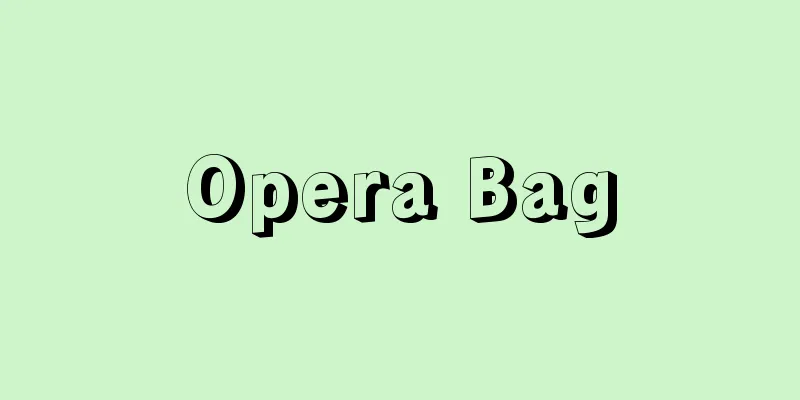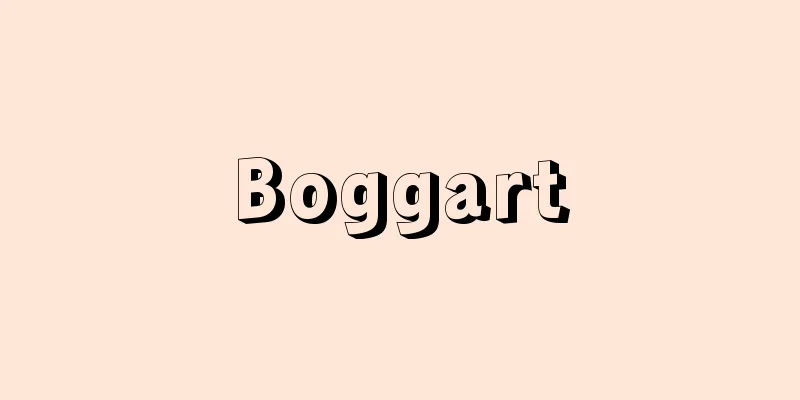Reading instruction - dokushoshido

|
Guidance to help children and students acquire reading skills and enrich their reading lives. In Japan's Japanese language education circles, throughout the Meiji, Taisho, and early to mid-Showa periods (until the 1960s), reading instruction was considered an educational (instructional) activity aimed at helping students acquire reading methods and skills and increasing their reading efficiency. However, in the late Showa period (from the 1970s), reading instruction was included as a reading instruction item in the Course of Study (1968 edition), and reading instruction came to be seen as an educational activity to improve and enrich reading lives. The reading life of each individual child or student became the subject of instruction. [Noji Junya] the goalUltimately, this is required to establish a reading lifestyle and form a reading personality. Moreover, it is desirable for each individual to establish individual reading as a reader (being able to read in a way that is unique and distinctive to each individual as a reader). Therefore, the goals are (1) to develop reading ability and (2) to improve a reading lifestyle. (1) is to develop an attitude and habit of becoming familiar with books, and of reading proactively and willingly, and to develop the attitude and ability to select appropriate books according to one's own purpose and needs and to read them well. (2) is to enable students, as readers, to proactively and systematically design their own reading lifestyle, to enrich their own life experiences and activities, and to aim for a reading lifestyle that will enable them to survive in the information society. [Noji Junya] regionIt is usually divided into three areas: (1) introductory reading instruction, (2) developmental reading instruction, and (3) therapeutic reading instruction. (1) is an area that grasps the actual state of children's and students' reading lives, particularly their motivation to read, reading habits, reading ability, reading interest, and reading environment, and focuses on how to encourage children and students who do not want to read to read. (2) is an area that targets children and students who have the habit, ability, and attitude to read, and provides instruction with the aim of further improving their reading ability and forming a reading personality. (3) is an area that provides clinical and therapeutic instruction to children and students who have problems and deficiencies in reading activities, such as children with reading difficulties or reading disorders, so that they can read normally. [Noji Junya] assignmentIn today's society, where people are increasingly turning away from print media, the challenges of reading instruction are serious and urgent. The biggest challenge is how to help children and students, who spend a lot of time watching television, discover the true joy and pleasure of reading and establish a reading lifestyle while at the same time instructing them in how to watch television programs. Other important issues include how to provide reading instruction to young children at home, to children, boys and girls, and adolescents at school, and further, to adulthood and the elderly in society. It is hoped that reading instruction will be positioned within the perspective of lifelong education and will be useful in each reading activity and reading lifestyle at home, school, library, community center, workplace, etc. From 1966 to 1980, Hama Omura (1906-2005), who was a teacher at Ishikawadai Junior High School in Ota Ward, Tokyo at the time, provided reading guidance for junior high school students, and drew attention for the creative and ingenious practice that resulted. Since then, methods of instruction that help students design their reading life and develop strong readers (readers) have been actively sought and developed. In addition, parent-child reading and reading club activities have been enthusiastically carried out. It is important to work closely together to ensure that reading guidance in school education, reading life at home, and the reading movement in society are richly fruitful. The development and spread of school and public libraries is also a major issue. Regarding the development and improvement of school libraries, the placement of librarians, securing the number of books, and collecting and using learning materials are all being actively addressed. One of the future issues that will attract attention is the creation of a free electronic library, with a view to utilizing websites that allow students to enjoy reading using the Internet. In 1988, Funabashi Gakuen Girls' High School in Funabashi, Chiba Prefecture, started a "morning reading" initiative in which all students read for 10 minutes every morning, and this reading initiative caused a great stir nationwide. Since then, the circle of "morning reading" has spread nationwide, and it has been reported that new reading activities have been carried out and have produced results. [Noji Junya] "Modern Reading Guidance, by Namekawa Michio (1976, Meiji Tosho Publishing)" ▽ "An Exploration of Individual Reading, by Noji Junya (1978, Kyobunsha)" ▽ "Omura Hama Japanese Language Classroom, Volume 7: Actual Reading Guidance 1, Omura Hama Japanese Language Classroom, Volume 8: Actual Reading Guidance 2, by Omura Hama (1984, Chikumashobo)" ▽ "Reading Guidance, edited by Ichige Katsuo, Suda Minoru, and Noguchi Yoshihiro (1993, Meiji Tosho Publishing)" ▽ "Collection of Basic Essays on Japanese Language Education 18: Theory of Japanese Language Reading Guidance, edited by Muraishi Shozo (1993, Meiji Tosho Publishing)" ▽ "Morning Reading Produced a Miracle: High School Girls Who Read for 10 Minutes Every Morning, edited by Funabashi Gakuen Reading Education Research Group (1993, Kobunken)" ▽ "Reading in the Classroom, edited by Fukawa Genichiro and the Long Story Society, Elementary school edition: Let's change the "reading" lesson, Reading in the classroom Junior high school edition: Let's change the "reading" lesson (1995, 1996, Toyokan Publishing) ▽ Shinichi Masuda, Research on the practice history of reading education (1997, Gakugei Tosho) ▽ Genichiro Fukawa, Masaki Takagi, and Long Piece Society eds., Let's expand the "world of books" -- Japanese language classrooms that create culture (1998, Toyokan Publishing) ▽ Ko Hayashi ed., Morning reading to nurture the mind (1999, Educational Development Research Institute) ▽ Shigeru Komori and Jun'itsu Hamamoto eds., Creating lessons to nurture living and working Japanese language skills, Volume 9: Learning guidance to encourage reading and become familiar with reading (2000, Nichibun) ▽ Margaret Meek, translated by Tomoko Kodama, Nurture reading ability -- Margaret Meek's theory on reading education (2003, Kashiwa Shobo) ▽ "Reading Instruction to Raise Children's Love of Books - Focusing on Reading Aloud and Book Talks" by Junko Murakami (2004, National School Library Council) " "Free Reading to Open Children's Future - Tips for Reading Instruction to Pique Their Interest" by Tsuyoshi Sasakura (2004, Kitaoji Shobo) [References] | | |Source: Shogakukan Encyclopedia Nipponica About Encyclopedia Nipponica Information | Legend |
|
児童・生徒に読書力を習得させ、読書生活を豊かにさせるための指導。わが国の国語教育界では、読書指導について、明治期・大正期・昭和前中期(1960年代まで)を通じて、読書の方法・技能を習得させ、読書効率をあげさせることを目ざした教育(指導)営為と考えられてきた。しかし、昭和後期(1970年代から)は、学習指導要領(昭和43年版)にも読むことの指導事項として読書指導が取り上げられるようになり、読書指導は読書生活を高め、豊かにさせるための教育活動としてとらえられるようになった。児童・生徒ひとりひとりの読書生活のあり方が指導の対象に据えられるようになった。 [野地潤家] 目標究極には、読書生活の確立、読書人格の形成に求められる。さらにいえば、ひとりひとりが読書人として個性読み(読み手として、ひとりひとりその人らしい独自の個性的な読み=読書ができること)を確立することが望まれる。したがって目標とするところは、(1)読書力の育成、(2)読書生活の向上である。(1)は、書物(図書)に親しみ、進んで積極的に読書をしていく態度や習慣を養い、自ら目的や必要に応じて適書を選択し読みこなしていく態度や能力を伸ばしていくようにすること。(2)は、読書人として、自らの読書生活を意欲的に計画的に設計し、自らの生活経験や活動を豊かなものにさせることであり、情報化社会に生き抜いていける読書生活を目ざさせることである。 [野地潤家] 領域通例、三つに分けられる。すなわち、(1)読書への導入的指導、(2)読書の展開的指導、(3)読書の治療的指導である。(1)は、児童・生徒の読書生活の実態、とくに読書意欲、読書習慣、読書能力、読書興味、読書環境などの実態をとらえ、読書しようとしない児童・生徒を、どのようにして読書させるようにしていくかを中心課題とする領域。(2)は、読書する習慣、能力、態度をもった児童・生徒を対象として、さらに読書力を伸ばし、読書人格の形成を目ざして指導をしていく領域。(3)は、読書困難児・読書異常児のように、読書活動に欠陥を有し問題をもっている児童・生徒に対して、正常な読書がなされるように臨床的・治療的指導を進めていく領域である。 [野地潤家] 課題活字離れの著しい現代社会にあっては、読書指導の抱える課題は深刻で切実である。テレビ視聴に多くの時間を割いている児童・生徒たちに、テレビ番組の視聴の仕方を指導すると同時に、読書の真の楽しみ、喜びをどのようにして発見させ、読書生活の確立をどのようにして図らせるかは、もっとも大きな課題である。また家庭における幼児期の読書指導をどうするか、学校における児童期、少年少女期、青年期の読書指導をどうするか、さらに社会における成人期、老年期の読書指導をどうするかも重要な課題である。読書指導が生涯教育の見通しのなかに位置づけられ、家庭、学校、図書館、公民館、職域など、それぞれの読書活動、読書生活に役だてられることが望まれる。 1966年(昭和41)から80年にかけて、中学生を対象にした読書指導が、当時東京都大田区石川台中学校教諭であった大村はま(1906―2005)によってなされ、創意工夫にあふれた実践を結実させて注目された。爾来(じらい)、読書生活を設計させ、しっかりした読み手(読書人)を育てていくための指導の仕方が積極的に求められ開発されつつある。また、親子読書をはじめ読書会活動も意欲的に行われている。学校教育における読書指導、家庭における読書生活、社会における読書運動が緊密に協力しあって、豊かな実りをもたらすように努めていくことこそたいせつな課題となる。学校図書館・公共図書館の整備と普及も大きい課題である。学校図書館の整備充実に関しては、司書教諭の配置、蔵書数の確保、学習資料の収集・活用など、それぞれに意欲的に取り組まれている。今後の課題の一つとしては、インターネットを使って読書を楽しむホームページの活用を視野に入れた、無料公開の電子図書館のことも注目されよう。 1988年に、千葉県船橋市船橋学園女子高等学校で、全校生徒が毎朝10分本を読む「朝の読書」が始められ、この読書への取組みは、全国的に大きい反響をよんだ。爾来、「朝の読書」の輪は全国的に広がって、新しい読書活動が営まれ、成果があげられたことが報告されている。 [野地潤家] 『滑川道夫著『現代の読書指導』(1976・明治図書出版)』▽『野地潤家著『個性読みの探究』(1978・共文社)』▽『大村はま著『大村はま国語教室第7巻 読書生活指導の実際1』『大村はま国語教室第8巻 読書生活指導の実際2』(1984・筑摩書房)』▽『市毛勝雄・須田実・野口芳宏編『読書の指導』(1993・明治図書出版)』▽『村石昭三編『国語教育基本論文集成18 国語科読書指導論』(1993・明治図書出版)』▽『船橋学園読書教育研究会編著『朝の読書が奇跡を生んだ――毎朝10分、本を読んだ女子高生たち』(1993・高文研)』▽『府川源一郎・長編の会編『読書を教室に 小学校編――「読み」の授業を変えよう』『読書を教室に 中学校編――「読み」の授業を変えよう』(1995、1996・東洋館出版社)』▽『増田信一著『読書教育実践史研究』(1997・学芸図書)』▽『府川源一郎・高木まさき・長編の会編『「本の世界」を広げよう――文化を生み出す国語教室』(1998・東洋館出版社)』▽『林公編著『心を育てる朝の読書』(1999・教育開発研究所)』▽『小森茂・浜本純逸編『生きてはたらく国語の力を育てる授業の創造 第9巻 進んで本を読み読書に親しむ学習指導』(2000・ニチブン)』▽『マーガレット・ミーク著、こだまともこ訳『読む力を育てる――マーガレット・ミークの読書教育論』(2003・柏書房)』▽『村上淳子著『本好きな子を育てる読書指導――読みきかせとブックトークを中心に』(2004・全国学校図書館協議会)』▽『笹倉剛著『子どもの未来をひらく自由読書――関心をひきだす読書指導のコツ』(2004・北大路書房)』 [参照項目] | | |出典 小学館 日本大百科全書(ニッポニカ)日本大百科全書(ニッポニカ)について 情報 | 凡例 |
<<: Reading and Reading Diary - Dokushobinkyuuki (English)
Recommend
Wood-laying
...The manual method uses the slope of the mounta...
Rajahmundri (English spelling)
…a river in the central part of the Indian penins...
Minor Socratics
A general term for the various schools establishe...
Pectus excavatum
(1) Pectus excavatum Definition and Concept Pectus...
Semantic analysis
Object program generation process In programming l...
Adam Krissi
…By 29 BC it had become part of the Roman Empire,...
Profession - Professio religiosa (Latin)
A liturgy of monastic vows unique to the monastic ...
Shaping machine - katakezuriban
A machine tool that cuts grooves and processes fl...
Grateloupia livida (English spelling) Grateloupialivida
…[Mitsuo Chihara]. . . *Some of the terminology t...
Lagothrix flavicauda (English spelling) Lagothrixflavicauda
… [Kuroda Suehisa]. . . *Some of the terminology ...
Pembroke table
…From the 17th century, small gateleg tables with...
Civet cat (Viverrid)
A general term for a mammalian species belonging t...
Humidifier fever - Kashitsuki fever
…Prevention can be achieved by constantly keeping...
Ushinomine - Ushinomine
...On the right bank of the mouth of the Kaminada...
MIT - Master's degree
Massachusetts Institute of Technology in the Unite...









